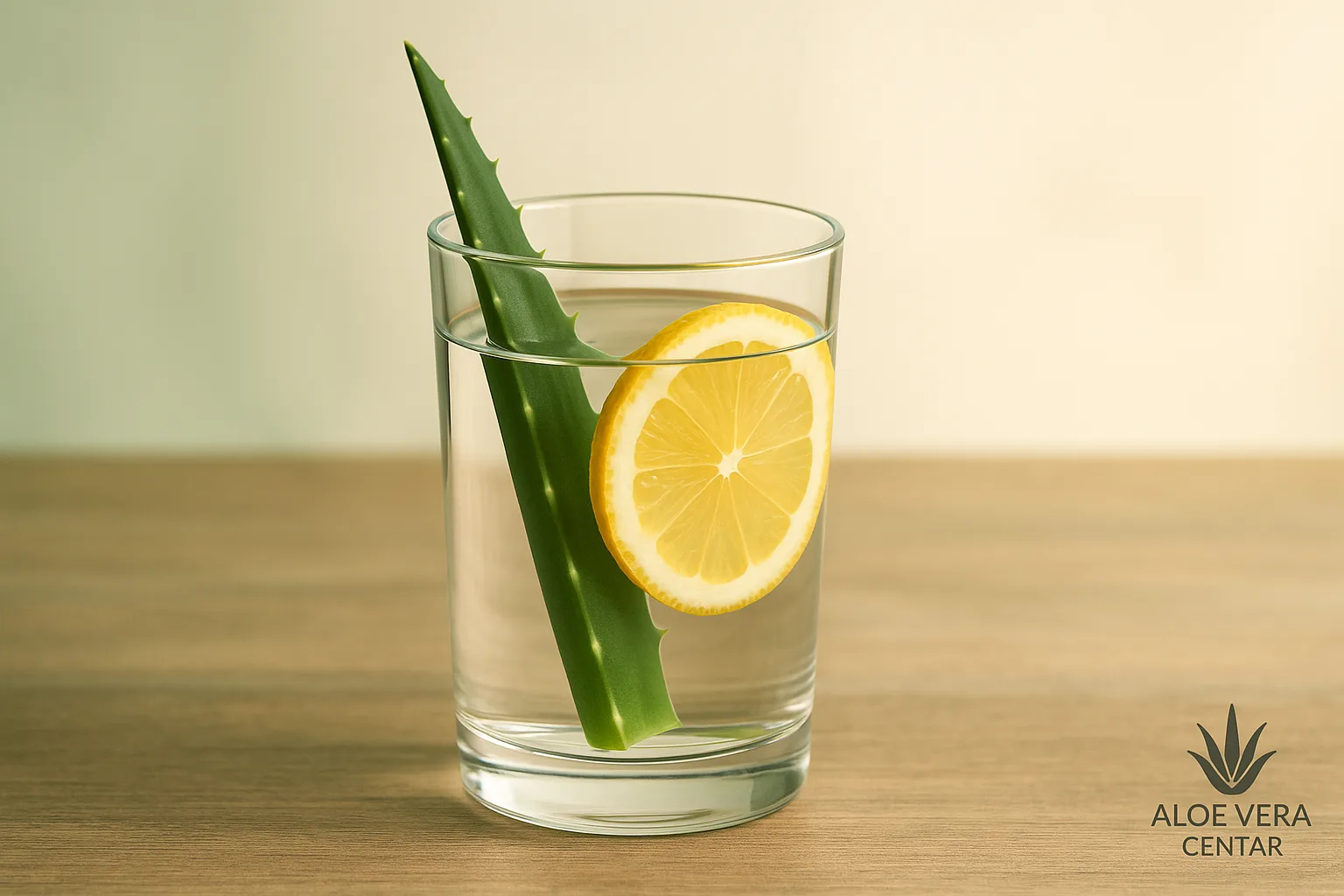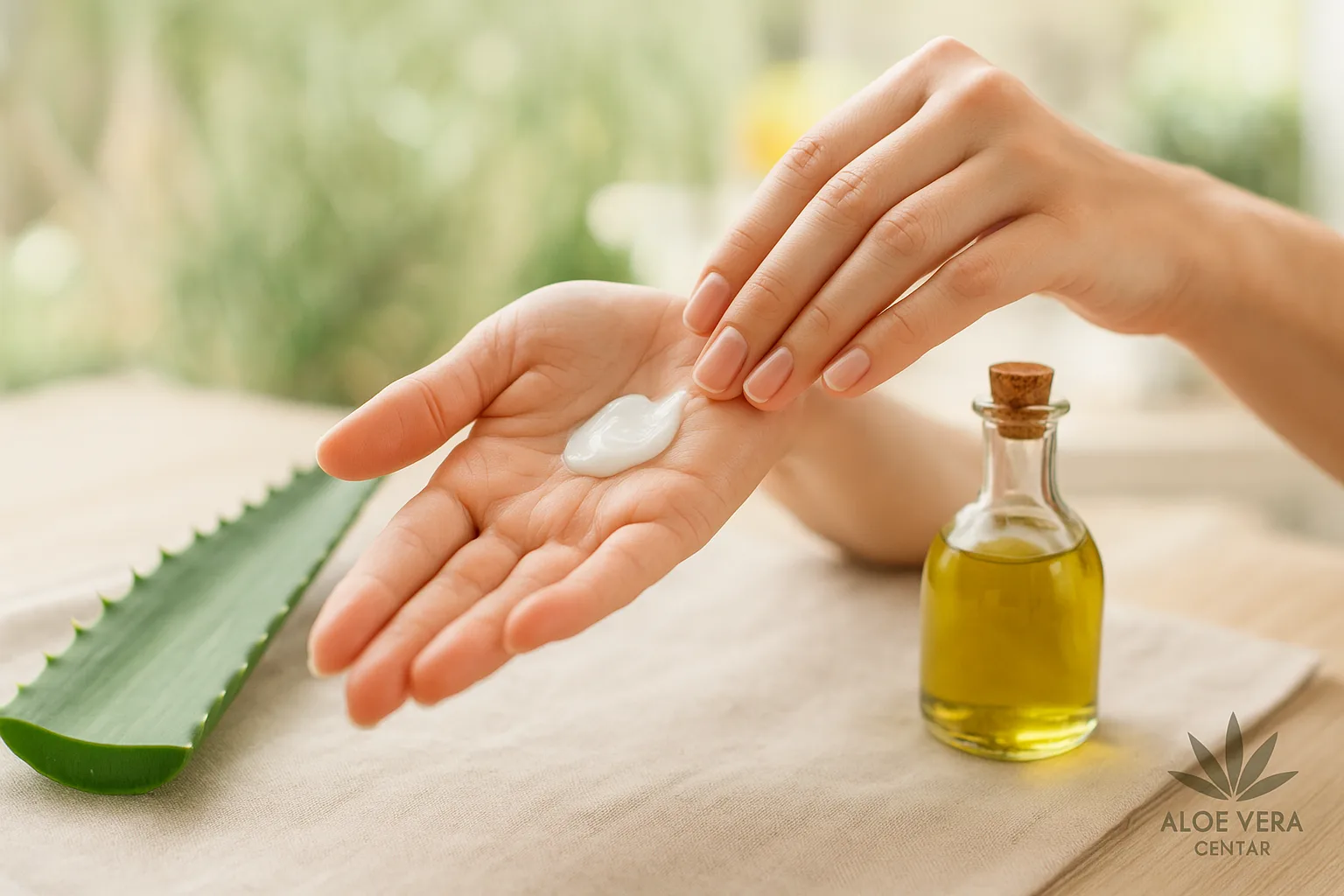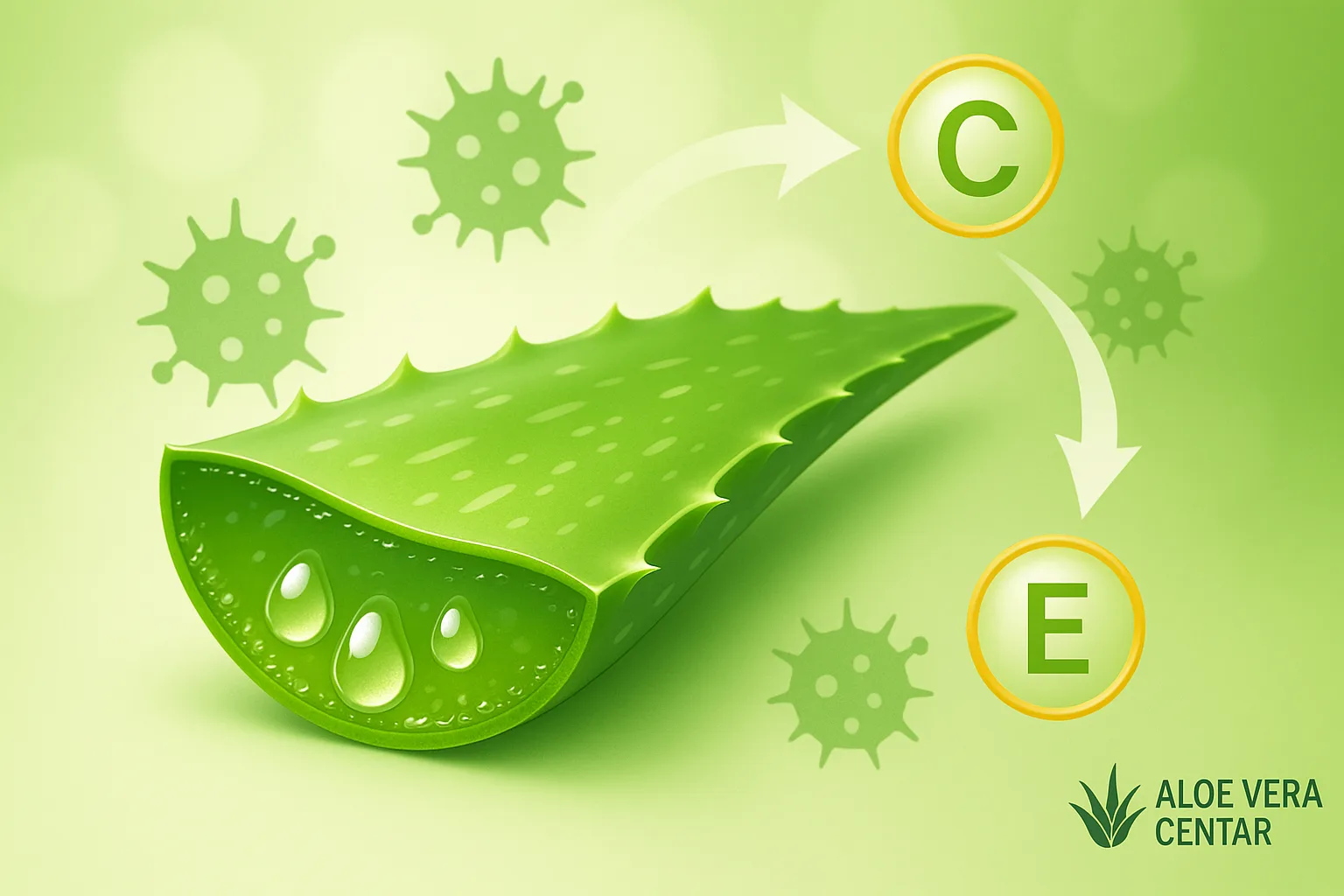
Migraine Symptoms – Recognize Early Signs and Naturally Relieve Pain
Migraine Symptoms: how to Recognize Them, why They Occur, and how to Naturally Relieve Them
Migraine symptoms can appear suddenly and throw off balance even people who aren’t prone to frequent headaches. You might wonder: “Why does it hurt so much that I can’t function?” or “Is this just a regular headache or something more serious?”
Here’s the thing: migraines aren’t ordinary headaches – they often involve intense, pulsating pain on one side of the head, accompanied by hypersensitivity to light and sound, nausea, and even vomiting. But that’s not all… Migraine attacks can last for hours, even days, and people who experience them often describe the feeling as “head throbbing and every sound or air on the skin hurts.”
In this article, you’ll learn why migraines occur, what the typical symptoms and triggers are, and what you can do to relieve them through natural approaches. Additionally, we’ll connect migraines with potential links to other conditions, including autoimmune diseases and hormonal changes, and mention supplements like Forever Arctic Sea Omega or aloe-based products that can contribute to better recovery.
If you’ve been struggling with headaches for a long time, we hope you’ll find guidance here that will help you regain control over your daily life.
What is a Migraine and how is it Different from a Regular Headache?
Migraine is a neurological condition that typically involves intense, pulsating pain on one side of the head, although the pain can spread or “migrate.” Unlike a “regular” headache, migraine is often associated with other symptoms, such as:
- Light sensitivity (photophobia)
- Sound sensitivity (phonophobia)
- Nausea or vomiting
- Visual disturbances (aura), such as flashing dots, distorted vision, or even temporary vision loss
While most headaches can be relieved by drinking a glass of water or taking a pain reliever and resting briefly, migraine symptoms can last from 4 hours up to 72 hours, and sometimes longer. Some people experience “migraine with aura” – brief neurological phenomena before or during the pain itself (such as flickering dots, spots moving across the visual field, or numbness in the arms). In other cases, migraine occurs without aura but with equally severe headache.
Connection with other Conditions
It’s important to know that people who suffer from chronic migraines are more likely to experience other health issues, including autoimmune disorders. In this context, you may have heard of autoimmune diseases, and even some hormonal imbalances like hashimoto problems. While there isn’t always a direct cause-and-effect relationship, the combination of inflammation tendencies and inadequate immune response can contribute to migraine frequency. If you’re also struggling with other symptoms (like joint pain, low TSH, or skin rashes), it’s always wise to examine all these signs and visit a specialist who can combine them into a complete picture.
Most Common Migraine Symptoms and Phases
Although migraine can manifest differently in each person, experts often divide an attack into several phases:
- Prodromal phase: Can occur hours or days before the main pain. Symptoms include mood changes, increased appetite, food cravings, heightened sensitivity to smells or noise, and even frequent yawning.
- Aura (not present in all cases): Visual disturbances (sparkling lines, flashes, “tunnel vision”) or sensory issues (tingling in hands, face). Aura typically lasts 5 to 60 minutes.
- Headache phase: Intense, pulsating pain that can last 4-72 hours. May be accompanied by nausea, vomiting, intolerance to light and sound.
- Postdromal phase: After the pain subsides, some people feel exhausted, confused, or “washed out.” In rare cases, others will experience a burst of energy.
Migraine symptoms can vary between attacks. For example, one time the aura might be pronounced, and another time it’s almost unnoticeable. What’s important is learning to recognize your own early signals so you can react faster and possibly prevent the development of the most severe pain.
Migraine Triggers: What Causes Them?
No one likes sudden “explosions” of headache, but migraine often has its triggers. Here are some of the most common:
- Stress and tension: Emotional turbulence and chronic nervousness are classic triggers. Keep in mind that even a “sudden drop” in stress (e.g., when the weekend finally arrives) can trigger a migraine.
- Hormonal changes: In women, hormones are one of the main triggers – e.g., during the premenstrual period or during hormone therapies.
- Certain foods and drinks: Alcohol (especially red wine), chocolate, cheese, caffeine, and additives (e.g., nitrites) can trigger an episode.
- Irregular meals: Hunger or dehydration seriously increase the risk of attacks. Interestingly, some people do better on low-carb diets, like the keto diet, although every organism is different.
- Lack of sleep or biorhythm changes: Too much or too little sleep, jet-lag, or shift work can exhaust the body and “open the door” to migraine.
Track your patterns and keep a headache diary – note what you ate, how much you slept, and how you feel. This can reveal personal “triggers” you don’t even suspect.
Natural Approaches to Migraine Relief
While some will reach for classic pain medications or special triptans (for severe migraines), many turn to natural methods to reduce frequency and intensity. Here are several suggestions:
1. Dietary Supplements and Herbal Preparations
- Magnesium: Often mentioned as beneficial for relaxing blood vessels and muscles. Research (e.g., study on PubMed) shows that magnesium supplementation can reduce migraine frequency.
- Riboflavin (vitamin B2): According to some research, higher doses of vitamin B2 can help reduce attack intensity.
- Omega-3 fatty acids: Reducing inflammatory processes in the body can positively affect migraine. Forever Arctic Sea Omega contains EPA and DHA that contribute to blood vessel health and can help modulate inflammatory reactions.
If you’re interested in specific natural guidelines about magnesium and aloe vera, the migraine article on the Aloe Vera Center page elaborates on these ideas and offers additional advice.
2. Relaxation Techniques and Massage
Stress is a strong trigger, so regular practice of yoga, meditation, or deep breathing can reduce tension in the neck-shoulder area, often associated with the most common causes of headaches. Some resort to scalp or neck massage to relax the muscles that hold the skull and thus relieve “pressure.” In the acute phase of an attack, some will respond better to cold compresses on the forehead, others to warm ones. Experiment and find what works best for you.
3. Regulating Diet and Sleep Schedule
Irregular meals and sudden changes in sleep schedule contribute to migraine. Try eating smaller but more frequent meals, preferably with fewer processed products and “empty” calories. Establishing a stable routine of going to bed and waking up at the same time can also significantly improve the situation. If you’re interested in the deeper connection between digestive habits and immunity, also check out celiac symptoms – although not directly related to migraine, understanding intolerances and sensitivities in diet can help in the broader context. We also recommend reading our article natural help for migraine!
4. Aloe Vera and other Support Products
Besides Omega-3, some believe that other Forever products, like Aloe Vera Gel (due to detoxification and anti-inflammatory properties) or Forever Immublend (potential for strengthening immunity) can contribute to better body resistance. However, be realistic – creams or juices alone won’t solve migraine, but they can be part of a broader holistic approach, especially if migraines are related to inflammation or weakened gut flora. Also study related conditions such as joint pain or hashimoto, in case you suspect migraine is part of a larger autoimmune “mosaic.”
Can Migraines be Related to Autoimmune Diseases?
Many autoimmune diseases, such as lupus or rheumatoid arthritis, involve phases of increased inflammation and disrupted immune system that can affect blood vessels and nerve pathways. While there’s no strong evidence that every migraine is autoimmune, patient experiences show that people with autoimmune conditions often experience chronic migraines. Additionally, hormonal imbalances associated with low tsh or hashimoto can increase susceptibility to headaches.
There are also suggestions that specific diets (e.g., keto diet) or reduced intake of processed foods can affect inflammation levels in the body and therefore the frequency of migraines. Again, it should be said that not everyone is the same and individual tracking of what works is necessary.
FAQ (Frequently Asked Questions)
How to Distinguish a “Regular” Headache from a Migraine?
While a “regular” headache usually isn’t as severe and quickly calms down with simple measures (e.g., water, short rest), migraine symptoms include pulsating pain that can last up to several days, with nausea, sensitivity to light and sound, and possible occurrence of aura (visual disturbances).
What Steps to Take During a Migraine Attack?
First, retreat to a quiet, dark, and well-ventilated room. You can apply a cold compress to your forehead or a warm compress to your neck, depending on what suits you better. If you use medications, take them as soon as you recognize early signs (like aura). Hydration and quiet are key factors that help.
Can “Triggers” be Different from Attack to Attack?
Unfortunately, yes. One time red wine might bother you, another time excess stress or lack of sleep. That’s why it’s useful to keep a headache diary – to more easily spot patterns and react in time.
Are Natural Methods Effective Enough or Do I Need Medication?
For many people, natural methods (magnesium, omega-3, regular meals, relaxation techniques) significantly reduce the frequency and intensity of migraines. However, for severe attacks, medications are often necessary to prevent further deterioration. The best approach is to find a balance between conventional therapy and natural approaches.
Conclusion
Migraine symptoms vary from person to person, but they share strong, pulsating pain that can disable normal functioning. Recognizing early signs and potential triggers is key to better migraine management. Natural approaches like adjusted diet, supplements (e.g., Forever Arctic Sea Omega), relaxation techniques, and regular rest can alleviate attacks or at least make them less frequent. If you suspect deeper causes, especially if you have other autoimmune or hormonal issues, review expert articles (like psoriasis or low tsh) and consider a holistic approach to the body. If you want additional support and personalized advice, feel free to use our AI advisor and explore the most suitable products or lifestyle changes.
And don’t forget, always get 15% discount when ordering products to try various options and find exactly what works best for you. Migraine isn’t an unsolvable enigma, but a condition that, with timely action and a combination of different approaches, can become much more manageable.
Want to explore the topic further and learn specific strategies for different types of migraines? Check out our guide for migraine with aura where you’ll find techniques for reducing the frequency and intensity of attacks. If you’re looking for a broader perspective and natural approaches, also read natural solutions for migraines – a practical supplement to this article that can help you find relief faster.
Disclaimer: This article is not intended to replace medical examination or advice. If migraine attacks are extremely frequent, intense, or accompanied by unusual symptoms, be sure to consult a doctor to explore the best therapy and rule out other possible health problems.








